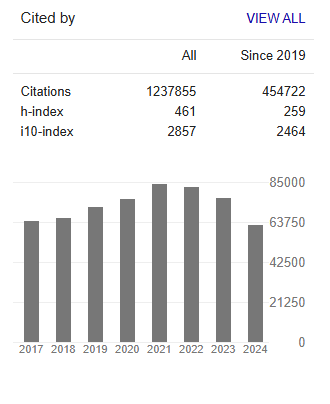Monitoring of Insecticide Resistance of Anopheles arabiensis Patton to DDT 4%, Deltamethrin 0.05%, Permethrin 0.75% and Bendiocarb 0.1% In River Nile State, Sudan, 2015
Abstract
Osman SOS, Hajhamed RM, Toto TH, Abdalmajed MA, Jihad A, Azrag SR and Aljack AG
The study purposed to determine insecticide susceptibility status of An. arabiensis in the three sites in River Nile State of Sudan to DDT 4%, Deltamethrin 0.05%, Permethrin 0.75% and Bendiocarb 0.1%. The insecticide susceptibility tests were implemented using the WHO standard procedure under optimum conditions and by using impregnated papers with recommended diagnostic concentrations. The tests done with three days-old An. arabiensis non-blood fed females. One hundred twenty to one hundred fifty females were tested for each insecticide at the diagnostic concentration with 6 replicates of 20 - 25 mosquitoes per test. Control tests consisted of groups of 50 female mosquitoes exposed to papers impregnated with carrier oil without insecticide under the same conditions. The exposure time was one hour; then mosquitoes were transferred into holding tubes for a 24 hours' recovery period after that the mortality recorded. Results revealed that An. arabiensis was susceptible to Bendiocarb with 100% mortality rate in all three sites in River Nile state; Shendi, Alzidab and Al Bawga. Anophele sarabiensis was also susceptible to Deltamethrin in Al zidab (98.8%), Al bawga (98.7%) and resistant in Shendi (81.2%). Anopheles arabiensis showed resistance to Permethrin and DDT in all three sites with mortality rates ranged 31.4% - 80.1%. For Bendiocarb KDT50 ranged between 18.1 - 38.5 minutes, while KDT95 ranged between 30.6 –94.7 minutes. The fastest KDT50 and KDT95 recorded were in Shendi area. Whereas for Deltamethrin KDT50 ranged between20.5 – 24.2 minutes, while KDT95 ranged between 90.6 – 132.2 minutes. The fastest KDT50 and KDT95 recorded was in Albawga. These results should be taken in consideration by the current vector control interventions in River Nile State.




